
Gigabyte GeForce GTX 670 2GB Windforce 3X Review
Manufacturer: GigabyteUK Price (as reviewed): £310.90 (inc VAT)
US Price (as reviewed): $399.99 (ex Tax)
When it first launched for around £330 earlier this year, Nvidia's GeForce GTX 670 2GB was a phenomenal card. It offered performance that couldn't be matched by AMD's top end GPU and thus offered excellent value too. Naturally, the state of the market has shifted since then thanks to price fluctuations, as well as AMD having released performance enhancing drivers and the GHz Edition of the HD 7970 3GB. A stock frequency GTX 670 2GB will set you back around £290 at the moment, and a HD 7970 3GB costs around £310, or £365 for a GHz Edition.
With us today is Gigabyte's GTX 670 2GB, featuring a three fan cooler and a core overclock. It retails for around £310, which makes it £20 more than a stock model of the same card and puts it directly in competition with the HD 7970 3GB. We previously looked at Gainward's GTX 670 2GB Phantom, which was unsurprisingly positioned favourably along the price-performance scale, but was let down by it's large and noisy cooler and thus offered little benefit over a stock model. Hopefully Gigabyte's take on the card will be more appealing.
Let's recap. The GTX 670 2GB is essentially the same 28nm Kepler GK104 GPU featured in the GTX 680 2GB, but with one of its SMCs removed, thus leaving it with a total of 1,344 stream processors and 112 texture units. It also sports seven of Nvidia's Polymorph engines for tesselation duties, and four rasterisers.
At stock frequencies, the card has a 915MHz core clock speed, with a boost speed of 980MHz (although the card will boost past this under heavy load). Gigabyte, however, has applied a modest 7 per cent overclock, taking the core clock speed to 980MHz for a boost clock of 1,058MHz, though the card actually reached 1,162MHz in our testing.
The 2GB of GDDR5 memory on the GTX 670 2GB is controlled by four 64-bit controllers for a total of 32 ROPs and a 256-bit interface. As Gigabyte has left the memory clock at its stock frequency of 1.5GHz (6GHz effective), their card also features the same 192GB/s of memory bandwidth as the stock model.
Physically, the card itself is much bigger than the reference model we looked at. This is because Gigabyte has utilised the 257mm PCB of the GTX 680 2GB rather than the stubbier 175mm one of the standard card. The card is actually 275mm long, however, thanks to the extruding cooler. Unlike Gainward's Phantom model, Gigabyte's card is still only a dual slot card, making it more flexible. It also features a pair of SLI connectors and the standard rear I/O selection.
As the PCB is that of a GTX 680 2GB, it houses all the memory chips on the front side, whereas the stock model of the GTX 670 2GB split them between front and back. Towards the right, you'll find the power circuitry. Here, Gigabyte has filled in the space left by the GTX 680 2GB reference PCB for an extra power phase, hence giving the card five digital power phases for the GPU, one more than the original GTX 670 2GB. Along with the two memory power phases at the top of the card, there is a total of 7+1 phase power on offer. An 8-pin PCI-E connection has replaced one of the 6-pin connections of the stock card too.
Cooling duties are provided by Gigabyte's Windforce 3X cooler. This features a massive aluminium heatsink, through which heat is transferred thanks to three copper heatpipes. Each memory chip makes direct contact with the heatsink too, thanks to some foam-like heat transfer material. This same material is used on the small heatsink which provides direct cooling for the VRMs of the GPU power phases, although the VRMs of the memory power phases have no such cooling. The entire thing is cooled by three fans, which exhaust some of their hot air back into your case.
Specifications
- Graphics processor Nvidia GeForce GTX 670 2GB, 980MHz (boosting to 1,058MHz)
- Pipeline 1,344 stream processors, 112 texture units, 32 ROPs
- Memory 2GB GDDR5, 6GHz effective
- Bandwidth 192GB/sec, 256-bit interface
- Compatibility DirectX 11.1, OpenGL 4.1
- Outputs/Inputs 2 x DVI, HDMI, DisplayPort
- Power connections 1 x 8-pin PCI-E, 1 x 6-pin PCI-E, top-mounted
- Size 275mm, dual slot
- Warranty Three years

MSI MPG Velox 100R Chassis Review
October 14 2021 | 15:04

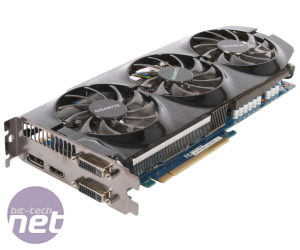
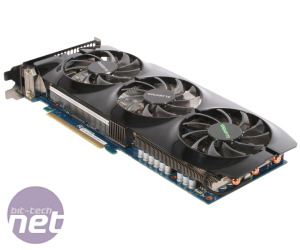
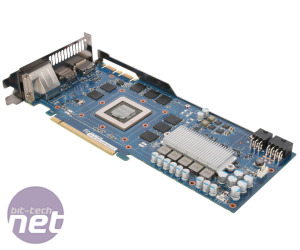
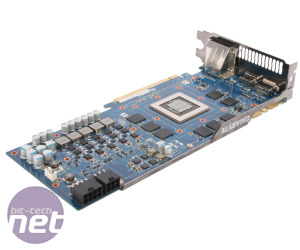
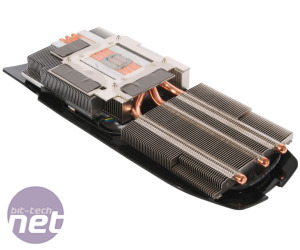
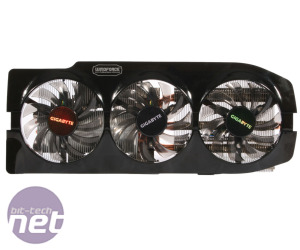







Want to comment? Please log in.